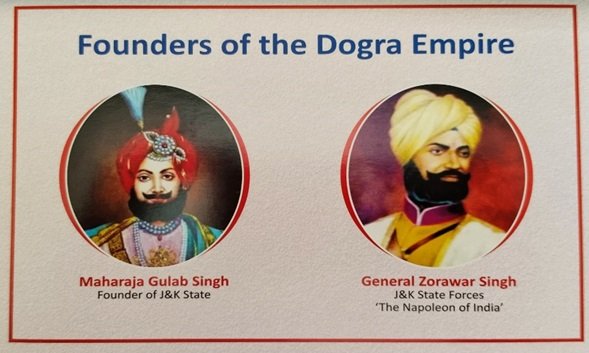The Dogra Sangrahalaya and Anusandhan Kendra.
Introduction
In a recent episode of Mann Ki Baat, Prime Minister Modi expressed his admiration for the historical figures of Shivaji and Subhash Chandra Bose. This article delves into the significance of these mentions and highlights the valorous contributions of Maharaja Gulab Singh and the Dogra community. It explores the need for recognition of their sacrifices and proposes the establishment of a world-class Dogra Museum and Research Center to commemorate their rich history and culture.
Shivaji and Subhash Chandra Bose: A Revered Legacy
Shivaji, the iconic Maratha warrior, has been a recurring theme in Prime Minister Modi’s speeches. His mention symbolizes the admiration for Shivaji’s courage, leadership, and unwavering commitment to the nation. Similarly, Subhash Chandra Bose and his Azad Hind Fauj have been bestowed unparalleled recognition, elevating their status even beyond that of former Prime Ministers.
Maharaja Gulab Singh and the Dogra Legacy
The author draws attention to the historic contributions of Maharaja Gulab Singh, whose valiant efforts expanded India’s borders beyond the Himalayas. Under the leadership of Gulab Singh and General Zorawar Singh, the Dogra forces conquered territories in Tibet, Mansar, and 22 princely states, including Gilgit-Baltistan. These regions were then integrated into India.
The author recounts the challenges faced by the Dogra forces during their campaign into Tibet, where they battled extreme weather conditions and a formidable Tibetan-Chinese alliance. While the Tibetan army eventually repelled the Dogra forces, they retaliated and successfully regained Ladakh and other territories during the Ladakh Treaty of Chushul.
Recognition and Tribute
Despite the immense sacrifices made by Maharaja Gulab Singh, Maharaja Hari Singh, and the Dogra army, their contributions have often been overlooked. Post-independence, Maharaja Hari Singh was exiled from his princely state, and Brigadier Rajinder Singh, a true hero, was martyred during the Indo-Pak conflict in 1947. The subsequent governments failed to acknowledge their valor.
The author emphasizes the need for proper recognition and tribute to these historical figures. He suggests the establishment of a world-class Dogra Museum and Research Center that would document and research the Dogra community’s sacrifices and contributions. This center would serve as a platform to educate not only the Dogra community but also visitors from around the world about their remarkable history, culture, and sacrifices.
Rajinderpura: A Fitting Memorial
The article proposes the establishment of the Dogra Museum and Research Center in Rajinderpura, a village in the Samba district of Jammu and Kashmir. This location holds significance as it was the birthplace of Brigadier Rajinder Singh and is adjacent to the Maharaja Hari Singh Stadium. The author suggests that both memorials be erected side by side, symbolizing the combined efforts of these two remarkable individuals in preserving the princely state.
Preserving the Dogra Legacy
The author expresses concerns about the fading relevance of the Dogra community in contemporary times. He highlights the importance of recognizing their rich heritage to ensure their legacy endures. By giving due recognition and establishing a world-class museum, the Dogra community’s contributions and sacrifices will be preserved and shared with future generations.
Conclusion
Prime Minister Modi’s mention of historical figures like Shivaji and Subhash Chandra Bose in Mann Ki Baat showcases the respect and admiration they hold. The article emphasizes the need to similarly recognize the significant contributions of the Dogras like the Marathas and Maharaja Gulab Singh like Shivaji or Maharana Pratap and Maharaja Ranjit Singh should be given proper place like them which needs research to give a place of pride to the great Dogras who have safeguarded the Northern Frontiers for which a Research Centre be established at the joint Memorial of Maharaja Hari Singh and Brigadier Rajinder Singh, the saviour of Kashmir and recipient of the first Gallantry Award of Independent India, Maha Vir Chakra, Posthumously in 1947. The last Maharaja who defended and Acceded the State to India in 1947. By establishing a Dogra Museum and Research Center in Rajinderpura, their extraordinary history, culture, and sacrifices can be commemorated, ensuring the Dogra legacy lives on for generations to come.

